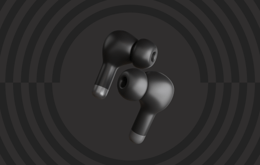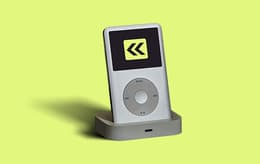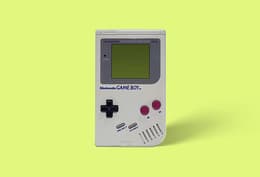
The Nintendo Switch has had endless popularity since its launch in 2017. Read how and why the console continues to capture fans worldwide.
“In the world of fun, there’s only number one.” These were the words of legendary Nintendo game director Shigeru Miyamoto back in 2017 in a conversation that marked the launch of the Japanese firm’s Switch console. And nearly 8 years on from its release, he couldn’t have been more on the nose. It’s one of Nintendo’s best-selling devices to date, and can be described as nothing short of a cultural phenomenon. As of August 2024 the Switch has hit 143.4 million global sales, making it the third biggest-selling game console of all time, only just behind the Nintendo DS (154m) and PlayStation 4 (155m).
But it wasn’t always this way, and this success is something that’s completely revitalised Nintendo as a brand. Back in the mid-2010s, Nintendo dealt with a business hiccup after dropping the Wii U, described as a “quirky failure” by The Guardian. No penalties if you don’t remember it – it was a strange, relatively unpopular device that couldn’t decide whether it wanted to be a traditional TV-based device, or a handheld console (it came with a confusing, clunky, screen-based controller). It tanked with buyers, abandoning the casual gamer for a more limited audience, and barely sold 13.5 million units worldwide, with some experts suggesting the Wii U’s failure could even prove terminal for Nintendo as a business.
Why the Wii U failed in under a minute...
But those bleak predictions now look incredibly silly when revisited in 2024. By all accounts, the Switch remains a resounding success that’s drawn in big audiences and avoided the Wii U curse. So, just why has the Nintendo Switch been so popular for so long?
A lot of the answers can be found in Miyamoto’s “world of fun” comments. Whether it’s Zelda: Breath of the Wild, Super Mario Odyssey, Pokemon Sword / Shield, or Animal Crossing: New Horizons, the biggest-selling games on the Switch all prioritiz\se open-world environments. These give players a feeling of freedom and allow them to get lost in dreamy, cartoonish utopias. These games are rarely gendered with their character choices, and aren’t driven by the macho-vibes and testosterone seen in rival games like, say, the Call of Duty or Grand Theft Auto series.
A perfect example of this fun escapism was how Animal Crossing became a pop culture staple during the Covid-19 pandemic. A staggering 45 million people were taken in by Animal Crossing: New Horizons’ charms, and it's easy to see why. At a time when everything felt particularly desperate, this 2020 game allowed players to create their own vibrant worlds – where fluffy citizens treated one another with respect, all while creating friendships and plentiful crop harvests. It served as the antithesis to the distrust of your real-life neighbours at the time and resonated greatly with gamers who needed something that allowed them to take back some agency in their lives, no matter how small.
How Nintendo Switch became the top-selling console in America
For many of us, it doesn’t matter that rival consoles offer better 4K graphics – the Nintendo Switch is providing experiences that are uniquely escapist, and colourful. If you want, you can grab a couple of Joy-Con controllers and play multiplayer Mario Kart 8 Deluxe with your friends practically anywhere. Carrying the Switch onto the Tube for a play-through during your commute to work is no problem, either. This all makes the stationary, TV-only consoles of rivals Sony PlayStation and Microsoft Xbox feel more limited. In stark comparison, the Switch is immediately accessible; a console that due to its smaller screen size, strong battery life, and higher screen resolution, is much simpler to use as a handheld than its competitors.
The biggest selling games of the Switch’s console rivals have been things like post-apocalyptic thrillers (The Last Of Us) and sci-fi shooter games (Halo 5: Guardians), which, due to their obsession with guns and terror, have allowed Nintendo to differ with their own titles. Switch games are arguably far less male-orientated, and the device has around a 50% split between male and female players.
Nostalgia has also been a key driver for the Switch’s ongoing success. Nintendo’s expansive E-Shop library means it’s easy to purchase Nintendo 64 or GameCube games from the 1990s and 2000s, like Goldeneye 007, and even play them with strangers via online multiplayer. This has given millennials a chance to reconnect with their childhoods. And at a time where vintage is a massive retail trend, Gen Zers (and even younger generations) have a chance to see what the fuss was all about with all those critically acclaimed Nintendo games from times gone by.
With all the cutesy characters and lush landscapes, Nintendo allows people of all ages to switch off (excuse the pun) from the nihilistic news cycle. After all, Luigi sucking up ghosts into a giant hoover (Luigi’s Mansion 2 HD was released back in March) is far less panic-inducing than the space marines cutting up alien limbs (think Gears of War or Returnal) featured within the exclusive titles you tend to find more of on an Xbox or PlayStation. Nintendo is effectively the Disney of the video game market, making its fairytale appeal cross-generational and hyper-relevant for everyone who wants experiences less rooted in, or reflective of, everyday societal chaos.
So what’s next for the Switch? The internet is flooded with rumors about the Switch 2 being imminent, and a Q1 release being on the cards. But the fact the Switch is almost 8 years old and is still the rage is a reflection of Nintendo’s pioneering “fun-first” mentality. To paraphrase Miyamoto once more – if you offer people a world of amusement during dark times, then you’re always going to be number one.
















